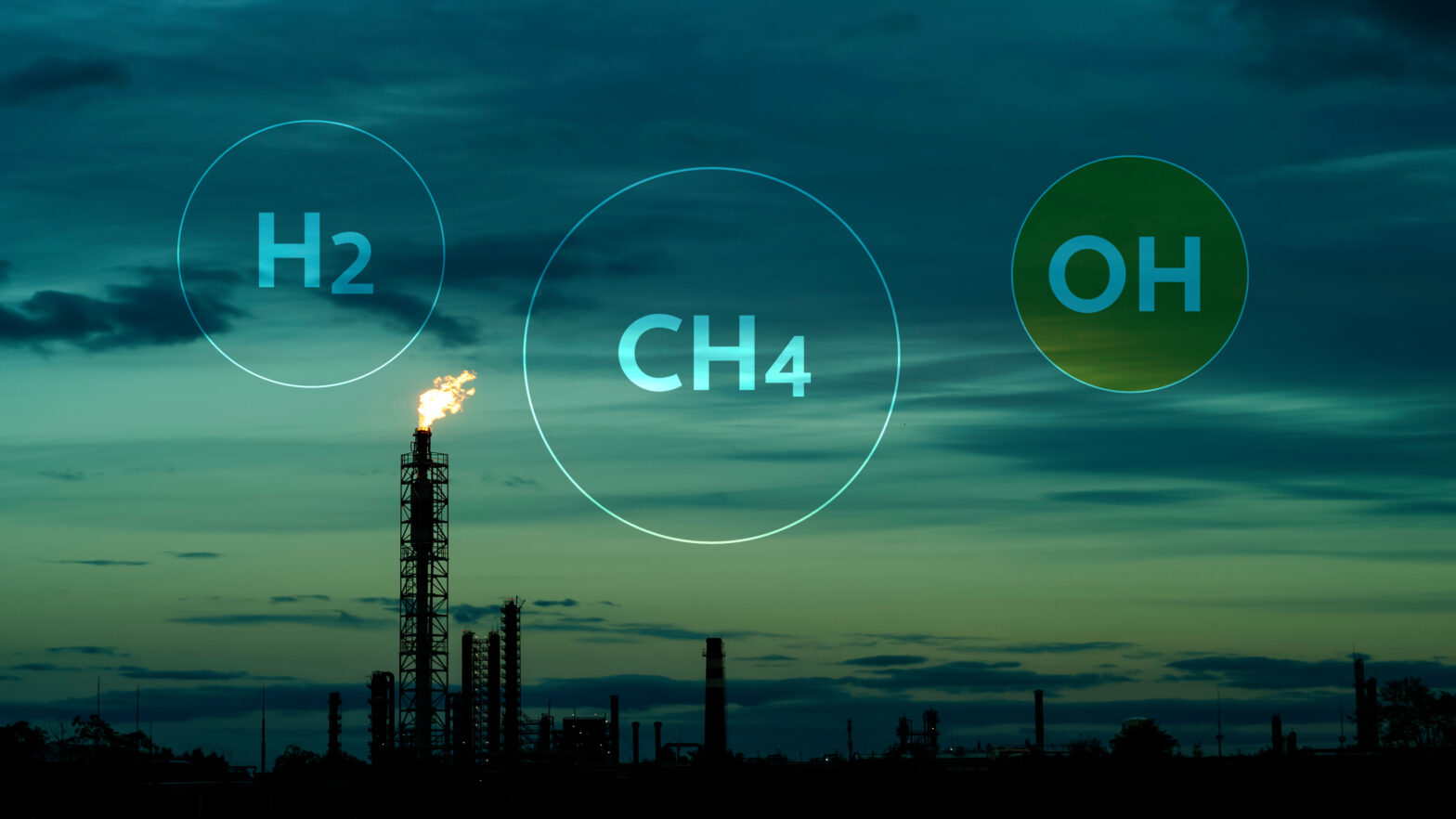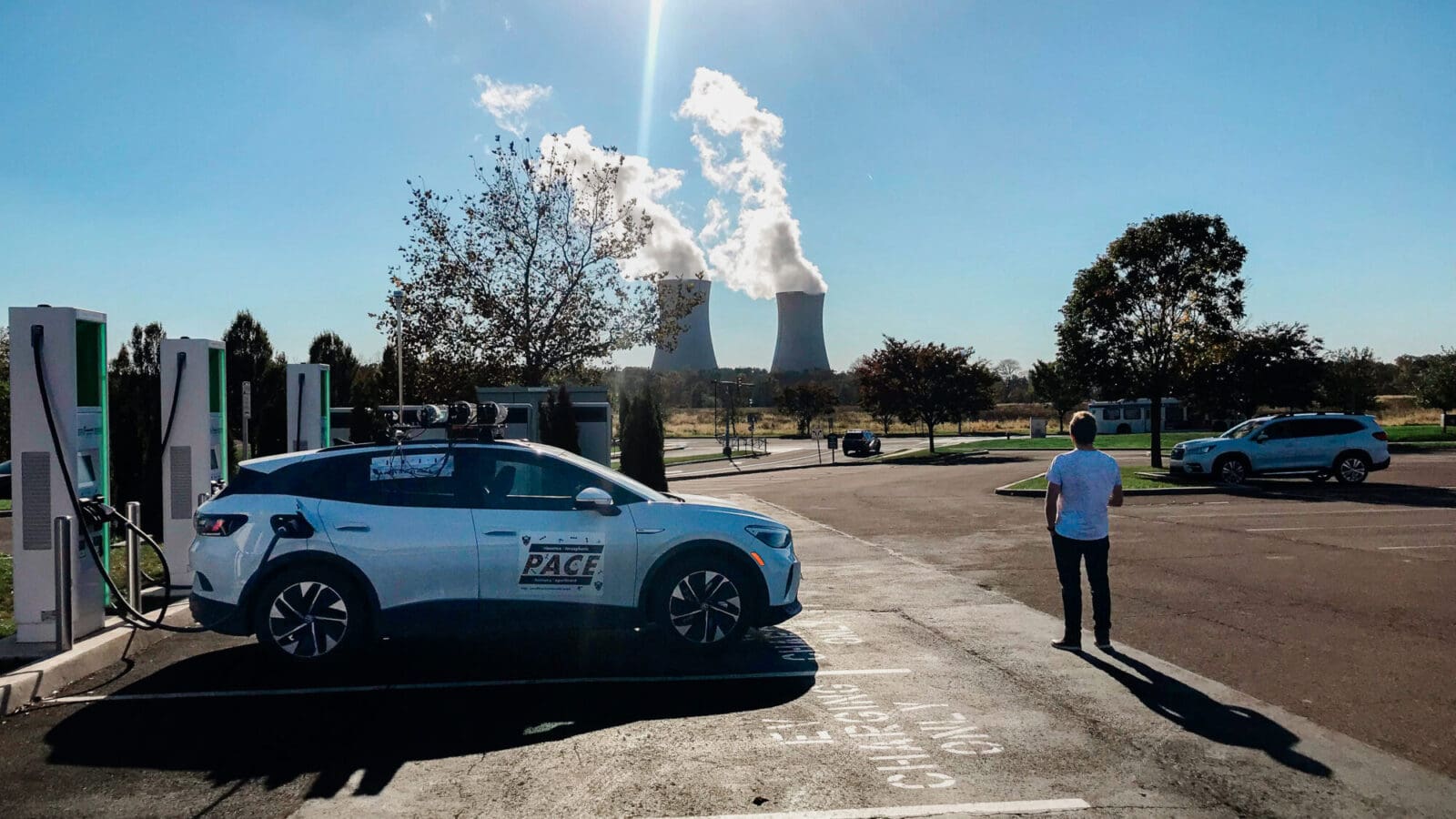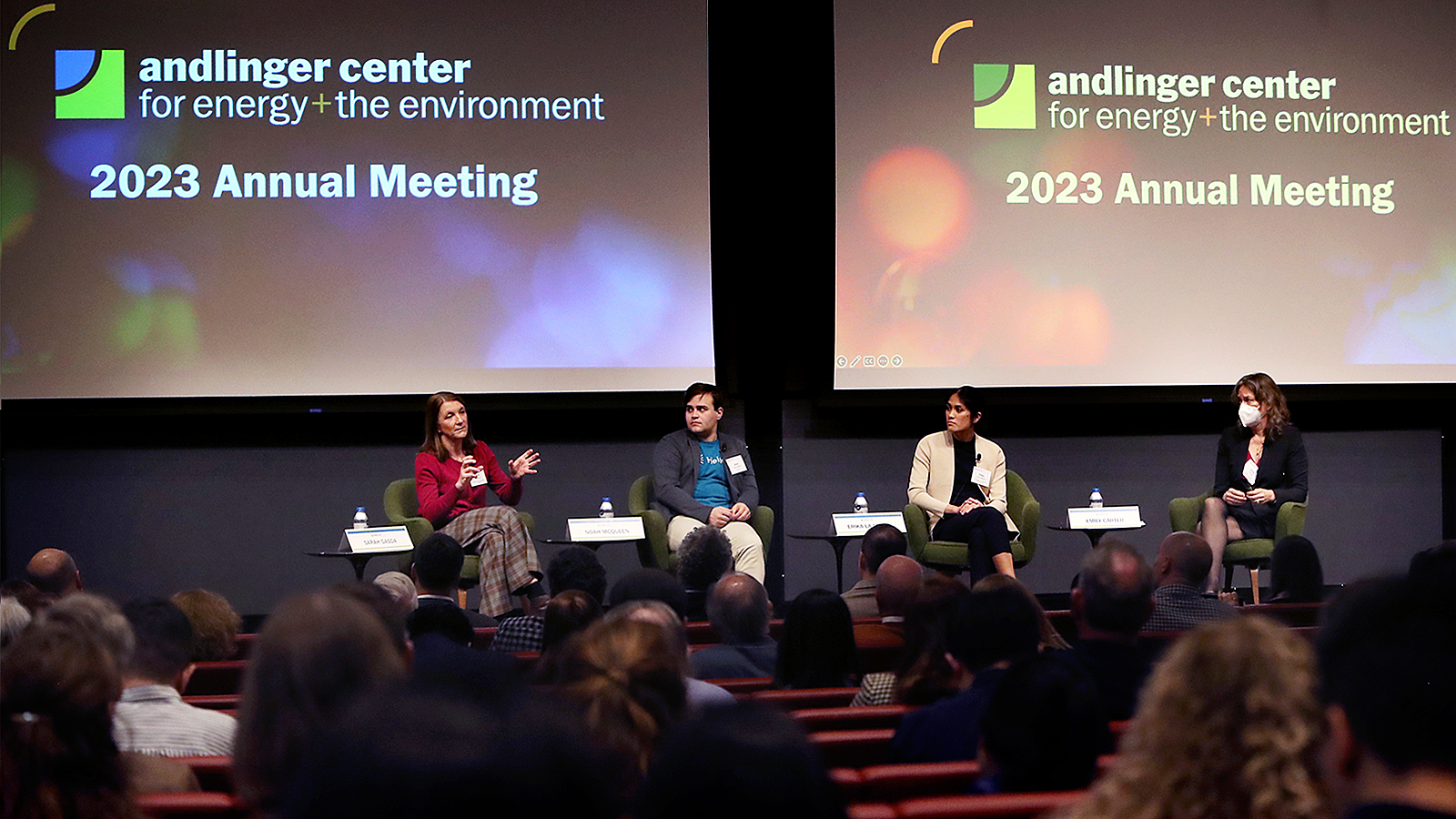This is because hydrogen gas easily reacts in the atmosphere with the same molecule primarily responsible for breaking down methane, a potent greenhouse gas. If hydrogen emissions exceed a certain threshold, that shared reaction will likely lead to methane accumulating in the atmosphere — with decades-long climate consequences.
“Hydrogen is theoretically the fuel of the future,” said Matteo Bertagni, a postdoctoral researcher at the High Meadows Environmental Institute working on the Carbon Mitigation Initiative. “In practice, though, it poses many environmental and technological concerns that still need to be addressed.”
Bertagni is the first author of a research article published in Nature Communications, in which researchers modeled the effect of hydrogen emissions on atmospheric methane. They found that above a certain threshold, even when replacing fossil fuel usage, a leaky hydrogen economy could cause near-term environmental harm by increasing the amount of methane in the atmosphere. The risk for harm is compounded for hydrogen production methods using methane as an input, highlighting the critical need to manage and minimize emissions from hydrogen production.

“We have a lot to learn about the consequences of using hydrogen, so the switch to hydrogen, a seemingly clean fuel, doesn’t create new environmental challenges,” said Amilcare Porporato, Thomas J. Wu ’94 Professor of Civil and Environmental Engineering and the High Meadows Environmental Institute. Porporato is a principal investigator and member of the leadership team for the Carbon Mitigation Initiative and is also associated faculty at the Andlinger Center for Energy and the Environment.
The problem boils down to one small, difficult-to-measure molecule known as the hydroxyl radical (OH). Often dubbed “the detergent of the troposphere,” OH plays a critical role in eliminating greenhouse gases such as methane and ozone from the atmosphere.
The hydroxyl radical also reacts with hydrogen gas in the atmosphere. And since a limited amount of OH is generated each day, any spike in hydrogen emissions means that more OH would be used to break down hydrogen, leaving less OH available to break down methane. As a consequence, methane would stay longer in the atmosphere, extending its warming impacts.
According to Bertagni, the effects of a hydrogen spike that might occur as government incentives for hydrogen production expand could have decades-long climate consequences for the planet.
“If you emit some hydrogen into the atmosphere now, it will lead to a progressive buildup of methane in the following years,” Bertagni said. “Even though hydrogen only has a lifespan of around two years in the atmosphere, you’ll still have the methane feedback from that hydrogen 30 years from now.”
In the study, the researchers identified the tipping point at which hydrogen emissions would lead to an increase in atmospheric methane and thereby undermine some of the near-term benefits of hydrogen as a clean fuel. By identifying that threshold, the researchers established targets for managing hydrogen emissions.
“It’s imperative that we are proactive in establishing thresholds for hydrogen emissions, so that they can be used to inform the design and implementation of future hydrogen infrastructure,” said Porporato.
For hydrogen referred to as green hydrogen, which is produced by splitting water into hydrogen and oxygen using electricity from renewable sources, Bertagni said that the critical threshold for hydrogen emissions sits at around 9%. That means that if more than 9% of the green hydrogen produced leaks into the atmosphere — whether that be at the point of production, sometime during transport, or anywhere else along the value chain — atmospheric methane would increase over the next few decades, canceling out some of the climate benefits of switching away from fossil fuels.
And for blue hydrogen, which refers to hydrogen produced via methane reforming with subsequent carbon capture and storage, the threshold for emissions is even lower. Because methane itself is the primary input for the process of methane reforming, blue hydrogen producers have to consider direct methane leakage in addition to hydrogen leakage. For example, the researchers found that even with a methane leakage rate as low as 0.5%, hydrogen leakages would have to be kept under around 4.5% to avoid increasing atmospheric methane concentrations.
“Managing leakage rates of hydrogen and methane will be critical,” Bertagni said. “If you have just a small amount of methane leakage and a bit of hydrogen leakage, then the blue hydrogen that you produce really might not be much better than using fossil fuels, at least for the next 20 to 30 years.”
The researchers emphasized the importance of the time scale over which the effect of hydrogen on atmospheric methane is considered. Bertagni said that in the long term (over the course of a century, for instance), the switch to a hydrogen economy would still likely deliver net benefits to the climate, even if methane and hydrogen leakage levels are high enough to cause near-term warming. Eventually, he said, atmospheric gas concentrations would reach a new equilibrium, and the switch to a hydrogen economy would demonstrate its climate benefits. But before that happens, the potential near-term consequences of hydrogen emissions might lead to irreparable environmental and socioeconomic damage.
Thus, if institutions hope to meet midcentury climate goals, Bertagni cautioned that hydrogen and methane leakage to the atmosphere must be held in check as hydrogen infrastructure begins to roll out. And because hydrogen is a small molecule that is notoriously difficult to control and measure, he explained that managing emissions will likely require researchers to develop better methods for tracking hydrogen losses across the value chain.
“If companies and governments are serious about investing money to develop hydrogen as a resource, they have to make sure they are doing it correctly and efficiently,” Bertagni said. “Ultimately, the hydrogen economy has to be built in a way that won’t counteract the efforts in other sectors to mitigate carbon emissions.”
The article, “Risk of the hydrogen economy for atmospheric methane,” was published Dec. 13, 2022, in Nature Communications. In addition to Bertagni and Porporato, coauthors include Stephen Pacala of Princeton University and Fabien Paulot, a scientist at the Geophysical Fluid Dynamics Laboratory of the National Oceanic and Atmospheric Association. The research was supported by the National Science Foundation, BP through the Carbon Mitigation Initiative, and the Moore Foundation.








